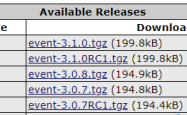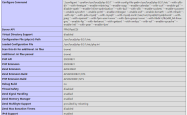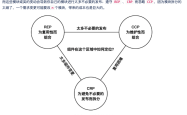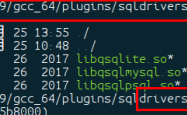基于PHP实现短信验证码发送次数限制
吾爱主题
阅读:136
2021-10-19 13:33:00
评论:0
对用户获取短信验证码的手机号、ip、和浏览器(使用唯一标识)进行限制。本文介绍的方法是对用户每天只能通过同一浏览器或同一ip地址获取验证码10次或者同一手机号只能获取3次短信验证码,三种限制为“或”关系,一条超限就不发验证码。方法是通过在服务器端将用户的手机号、ip、ur_r记录并写入文件,再通过读取文件记录判断用户请求发送验证码的次数来做限制。方法如下:
获取短信验证码页面:
?| 1 2 3 4 5 6 7 8 9 10 11 12 13 14 15 16 17 18 19 20 21 22 23 24 25 26 27 28 29 30 31 32 33 34 35 36 37 38 39 40 41 42 43 44 45 46 | <!DOCTYPE html> <html> <head></head> <body> <!-- 隐藏表单uv_r标识,用于对获取验证码的浏览器进行限制,唯一标识存储于浏览器cookie中。在用户进行获取短信验证码操作时将标识传入后台代码(可以通过js传入后台,此处未提供js代码) --> <input type= "hidden" name= "uv_r" value= "" id= "uv_r" > </body> <script type=”text/javascript”> /* 使用js获取cookie中ur_r唯一标识,如果不存在,生成唯一标识,js写入cookie,并将唯一标识赋给隐藏表单。 */ //唯一标识存入cookie var _uuid = getUUID(); if (getCookie( "_UUID_UV" )!= null && getCookie( "_UUID_UV" )!=undefined) { _uuid = getCookie( "_UUID_UV" ); } else { setCookie( "_UUID_UV" ,_uuid); } document.getElementById( "uv_r" ).value = _uuid; //赋给hidden表单 //生成唯一标识 function getUUID() { var uuid = new Date().getTime(); var randomNum =parseInt(Math.random()*1000); return uuid+randomNum.toString(); } //写cookie function setCookie(name,value) { var Days = 365; //这里设置cookie存在时间为一年 var exp = new Date(); exp.setTime(exp.getTime() + Days*24*60*60*1000); document.cookie = name + "=" + escape (value) + ";expires=" + exp.toGMTString(); } //获取cookie function getCookie(name) { var arr,reg= new RegExp( "(^| )" +name+ "=([^;]*)(;|$)" ); if (arr=document.cookie.match(reg)) return unescape(arr[2]); else return null ; } </script> </html> |
后端PHP处理代码:
?| 1 2 3 4 5 6 7 8 9 10 11 12 13 14 15 16 17 18 19 20 21 22 23 24 25 26 27 28 29 30 31 32 33 34 35 36 37 38 39 40 41 42 43 44 45 46 47 48 49 50 51 52 53 54 55 56 57 58 59 60 61 62 63 64 65 66 67 68 69 70 71 72 73 74 75 76 77 78 79 80 81 82 83 84 85 86 87 88 89 90 91 92 93 94 95 96 97 98 99 100 101 102 103 104 105 106 107 108 109 110 111 112 113 114 115 116 117 118 119 120 121 122 123 124 125 | <?php Class regMod{ //定义全局变量,用于设置记录文件的路径 Protected $Root = null; Public function __construct(){ $this -> Root = APP_PATH. "/data/msg_logs/" ; //自己定义的文件存放位置 } //获取短信验证码操作(Ajax方法为好) Public function get_authentication_code(){ if ( $_POST [ 'uv_r' ] && $_POST [ 'tel' ]) { $ip = $_SERVER [ "REMOTE_ADDR" ]; //ip $tel = $_POST [ 'tel' ]; //电话 $uv_r = $_POST [ 'uv_r' ]; //ur_r标识 if ( empty ( $uv_r )){ $uv_r = 0; } } //判断数据是否超过了限制 $uvr_num = $this ->checkUvr( $uv_r ); $tel_num = $this ->checkTel( $tel ); $ip_num = $this ->checkIp( $ip ); if ( $uvr_num < 10 && $tel_num < 4 && $ip_num < 10) { Echo "发送验证码" ; //符合发送条件,发送验证码的操作 } else { Echo “不发送验证码”; //当不发送验证码时,将数据存入文件,用于方便查询 $data = $tel . "|" . $ip . "|" . $uv_r . "|" ; if ( $uv_r >0 && $uvr_num >= 10) { $data = $data . "A@" ; } if ( $tel_num >= 4) { $data = $data . "B@" ; } if ( $ip_num >= 10) { $data = $data . "C@" ; } $this ->wirteFile( "" , $data ); $this ->ajax_return(0, "您今日获取短信验证码的次数过多!" ); //给用户返回信息,ajax_return()为自写方法(未提供) } } //以下方法为私有方法 //检测ur_r在文件中出现的次数 Private function checkUvr( $data ){ $fileName = "Uv_" . date ( "Ymd" ,time()). ".dat" ; $filePath = ( $this -> Root). $fileName ; //组装要写入的文件的路径 $c_sum = 0; if ( file_exists ( $filePath )){ //文件存在获取次数并将此次请求的数据写入 $arr = file_get_contents ( $filePath ); $row = explode ( "|" , $arr ); $countArr = array_count_values ( $row ); $c_sum = $countArr [ $data ]; if ( $c_sum <10) { $this -> wirteFile( $filePath , $data . "|" ); } return $c_sum ; } else { //文件不存在创建文件并写入本次数据,返回次数0 $this -> wirteFile( $filePath , $data . "|" ); return $c_sum ; } } //检测Tel在文件中出现的次数 Private function checkTel( $data ){ $fileName = "Tel_" . date ( "Ymd" ,time()). ".dat" ; $filePath = ( $this -> Root). $fileName ; $c_sum = 0; if ( file_exists ( $filePath )){ $arr = file_get_contents ( $filePath ); $row = explode ( "|" , $arr ); $countArr = array_count_values ( $row ); $c_sum = $countArr [ $data ]; if ( $c_sum <4) { $this -> wirteFile( $filePath , $data . "|" ); } return $c_sum ; } else { $this -> wirteFile( $filePath , $data . "|" ); return $c_sum ; } } //检测IP在文件中存在的次数 Private function checkIp( $data ){ $fileName = "Ip_" . date ( "Ymd" ,time()). ".dat" ; $filePath = ( $this -> Root). $fileName ; $c_sum = 0; if ( file_exists ( $filePath )){ $arr = file_get_contents ( $filePath ); $row = explode ( "|" , $arr ); $countArr = array_count_values ( $row ); $c_sum = $countArr [ $data ]; if ( $c_sum <10) { $this -> wirteFile( $filePath , $data . "|" ); } return $c_sum ; } else { $this -> wirteFile( $filePath , $data . "|" ); return $c_sum ; } } /** * 将数据写入本地文件 * @param $filePath 要写入文件的路径 * @param $data 写入的数据 */ Private function wirteFile( $filePath , $data ){ try { if (! is_dir ( $this ->Root)){ //判断文件所在目录是否存在,不存在就创建 mkdir ( $this ->Root, 0777, true); } if ( $filePath == "" ){ //此处是不发送验证码时,记录日志创建的文件 $filePath = ( $this -> Root). "N" . date ( "Ymd" ,time()). ".dat" ; } //写入文件操作 $fp = fopen ( $filePath , "a+" ); //得到指针 fwrite( $fp , $data ); //写 fclose( $fp ); //关闭 } catch (Exception $e ) { print $e ->getMessage(); } } } ?> |
以上就是本文的全部内容,希望对大家的学习有所帮助,也希望大家多多支持服务器之家。
原文链接:https://www.cnblogs.com/blogforly/p/5841811.html
声明
1.本站遵循行业规范,任何转载的稿件都会明确标注作者和来源;2.本站的原创文章,请转载时务必注明文章作者和来源,不尊重原创的行为我们将追究责任;3.作者投稿可能会经我们编辑修改或补充。











